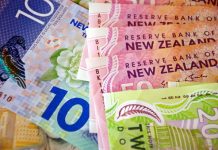Markets
Bonds yesterday showed volatile swings after the release of a series of US data and the ECB policy decision. However, as was often the case of late, moves mostly mirrored internal market dynamics rather than the news. The first estimate of the Q3 US GDP at 4.9% QoQa beat expectations, with strong private consumption, gross private investment, government consumption and even inventory building all supporting the strong growth performance. Price indicators were mixed. The core PCE deflator eased slightly more that expected to 2.4% (from 3.7%). September durable goods orders (4.7%) also were strong. Jobless claims rose slightly more than expected, but at 210k still suggest a solid labour market. In globo, the data confirmed the picture of a resilient US economy. US yields trended cautiously higher going into the data releases, but were captured by some kind of buy-the-rumour sell the fact dynamics afterward. The bond rebound was supported by a solid $38 bln 7-y US Treasury auction. In the end US yields eased between 12.3 bps (5-y) and 8.1 bps (2-y). At least for now, near 5%-yields apparently still attracts some buying interest, whatever the economic news.
The ECB as expected paused the hiking cycle that started in July last year, which lifted the depo rate from -0.5% to 4.0%. Inflation remains too high but declined markedly of late. The bank assesses that interest rates have reached a level that, if maintained sufficiently long, will make a substantial contribution to bring inflation back to target. Lagarde didn’t formally call an end to the hiking cycle and advocates a data dependent approach. However, given recent poor data, the bar for additional hikes is high. The bank didn’t change its guidance to continue reinvesting the proceeds from maturing PEPP bonds at least until the end of 2024. This can be considered as a soft touch. German yields changed between minus 5.0 bps (2-y) and unchanged (30-y).
On other markets, the combination of solid US data and softer yields didn’t really help equities (Nasdaq -1.76%, Eurostoxx -0.59%) ). The dollar again didn’t find a clear trend. DXY closed little changed at 106.6 as did EUR/USD (close 1.056). USD/JPY held north of the 150 barrier (150.40).
This morning, risk sentiment in Asian improves supported by solid results of the likes of Amazon after the WS close yesterday evening. Treasuries are losing marginal ground. The dollar trades little changed. Higher than expected Tokyo CPI data puts additional pressure on the BOJ to tweak its policy. Even so, the direct impact on USD/JPY is limited (150.2). Later today, the eco calendar is thin, except for the US September spending and income data and PCE price deflators (core expected at 3.7% from 3.9%). For bond markets, we expect more technical trading in the run-up to next week’s FOMC meeting. The dollar might cede some ground if equities would enter calmer waters after recent sell-off. EUR/USD tries to regain the October uptrend line (currently 1.057 area). If it succeeds it could create some short-term relief for the pair.
News and views
October inflation in Tokyo, a directional guide for the national figure, came in surprisingly hot. The headline number was seen coming in at the same 2.8% pace of September but instead accelerated to 3.3%. A core gauge excluding fresh food ticked up from 2.5% to 2.7%. The same measure which also strips energy eased marginally to 3.8% but from an upwardly revised September figure (3.9%). It puts the Bank of Japan ever more in a corner. The BOJ sticks to the view that much of the price surge, is just temporary. The BoJ meets next week. Earlier this week, rumours circulated it may lift the current 1% 10-y yield cap at that meeting. Yields are on the rise due to inflation and the global environment, potentially forcing the BoJ to defend the cap through bond buying in an increasingly thin (and distorted) market. The yen pays a heavy price for the central bank’s stubbornness. USD/JPY in the last two days pushed through the symbolical (& intervention) level of 150.
China’s Securities Journal reported that there’s a “high possibility” the central bank will lower the reserve requirement ratio for banks in the current quarter. Such a move would free up liquidity needed to absorb the CNY 1tn in additional spending the country earlier this week announced in a bid to shore up the economy.












